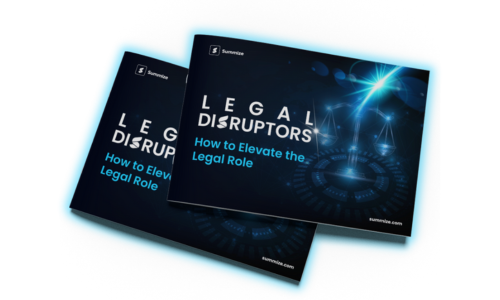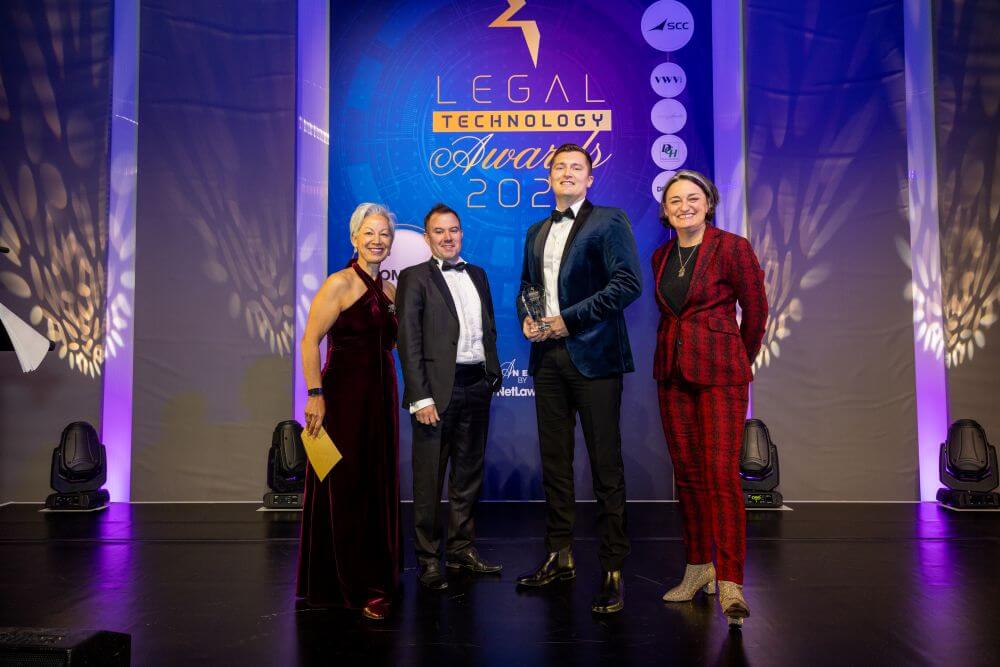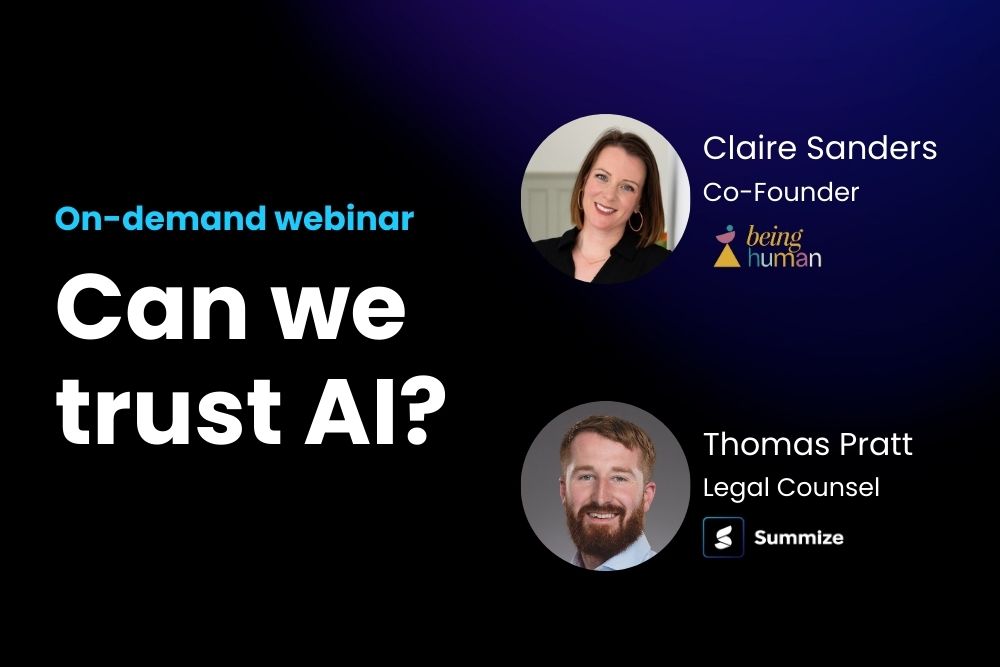Summize in conversation with Sarah Schoenen
Sarah Schoenen is Head of Legal Operations and Digital Transformation EMEA at PTC, a global computer software and services company.
December 22, 2023
December 3, 2025
In today's episode of the Summize Legal Disruptors Podcast, our CEO and Founder Tom Dunlop, sits down with Sarah Schoenen, Head of Legal Operations and Digital Transformation at PTC, to discuss the difference in attitude towards automation within legal teams compared to other departments, what it's like building a business case for technology at a global company like PTC, and what the team hope to achieve through partnering with Summize.
A fresh perspective on legal ops
Sarah, who began her career as a mechanical engineer, brings a unique perspective to legal transformation. Her background in production and digital transformation within industrial companies shapes her approach to legal operations. She notes that while other departments, like marketing or finance, may prioritize efficiency and process improvements, the legal team's focus often shifts toward risk management and transparency. For legal, it’s not just about reducing repetitive tasks, it's about making risks visible and ensuring compliance.
Legal’s journey towards digital transformation
Sarah explains that legal teams are often stuck in legacy processes. The main challenge to move away from these processes surrounds data management. Just like many other departments, legal teams need clear data to streamline their work, but establishing a solid roadmap for transformation can be daunting.
This is why legal teams are typically slower to adopt new technologies compared to other functions. Sarah and Tom discuss this further by saying that the legal team often struggles to justify urgency in their automation journey. Sarah added that the lack of immediate financial incentives in legal creates hurdles in securing budgets and driving change.
Building a business case for legal technology
Sarah shared valuable insights into building a business case for legal technology, especially at a global company like PTC. She stressed the importance of involving all teams, from legal to sales to finance. Each team definitely has different contract priorities, for example in sales it’s about speeding up contract cycles, for legal it’s about minimizing time spent on low-value tasks and for finance the priority is to ensure consistency in contract terms.
Sarah believes that the key to success is not framing the initiative as just a “legal tech tool” but presenting it as a holistic project involving people, processes, data, and tools. By uniting different departments around a shared goal, PTC was able to secure the necessary resources for their digital transformation.
The power of integration and familiar tools
Once PTC adopted Summize, the standout feature for all areas of the business was the seamless integration with familiar platforms such as Microsoft Teams and Salesforce. These integrations played a crucial role in driving user adoption, as many team members could access the contract management tool without leaving the tools they already use day-to-day. For Sarah, this was essential to ensuring a smooth and efficient process that aligned with PTC’s broader digital thread strategy.
Advice for legal teams on their automation journey
Sarah’s advice for in-house legal teams considering automation, was to first involve all the relevant stakeholders early on, including IT and digital transformation teams. Second, be prepared to iterate - many of PTC’s key insights and requirements for legal tech came from diving into the process and learning as they went. Sarah's message is clear: don’t wait for the perfect roadmap, simply start small, gather insights and adapt as the project continues.
If you would like to learn from even more of our Legal Disruptors, check out our Legal Disruptors Hub below.
Discover even more!
Explore more about contracting and CLM in our ultimate contract guides








